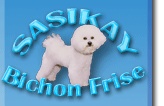


 |
|
|
|
|
|
|
|
|
 |
|
|
 |
|
By responding promptly and taking the puppy to a suitable place to potty, you teach the puppy to communicate with you at the same time that you are teaching the puppy where you prefer to have it go potty. If the puppy whimpers and you are busy and ignore it, then no lessons are learned. The best way to proceed with potty training is to have the puppy sleep in a crate with the door closed at night. When the puppy wakes up, immediately pick it up and carry it outside to the place you want it to potty. Stay with the puppy and tell it to go potty. Then the minute it starts to go potty, immediately praise the puppy. Then, bring the puppy inside for breakfast, which is served in the crate with the door closed. As soon as the puppy finishes eating, immediately pick it up and carry it outside again to go potty. When you are satisfied that the puppy is “empty” then it can run around and play as long as you have time to watch it. If you are busy and don’t have time to watch the puppy it should be in a safe area where it cannot get into mischief or soil the carpet. I recommend beginning by taking the puppy outside to potty every 1-2 hours. After a few days you will begin to know the puppy’s schedule and you can lengthen the time between potty breaks. You will quickly learn that when the puppy starts to sniff the carpet or floor that it is preparing to go to the bathroom. That is the time to pick it up and carry it outside. I cannot stress enough that you want to pick it up and carry it outside. If you simply try to call it to come outside, it will stop and potty on the way - which defeats the purpose completely. For those who do not like the idea of locking their puppy in a crate, let me explain that dogs are descendents of wolves, who were cave dwelling animals. The crate is their “safe haven” and should always be available to them, even when they are running around the house, playing. This is especially important if you have young children. The children should be taught to leave the puppy alone if the puppy runs into its’ crate. Children should never be allowed to pull the puppy out of the crate to continue playing. Remember, this is a baby. It might be a “fur” baby, but it is nevertheless a baby and it doesn’t have the stamina it will have when it is older. If you find you need
to be away from home from several hours, that is too long for a puppy
to be crated. I recommend buying an X-pen which you can set up with a
tarp underneath it. Put the puppy’s bed and some water at one end
of the pen and put some papers at the other end of the pen so the puppy
can go to the bathroom while you are gone. Last, but not least, remember
that housetraining a puppy requires a lot of consistency. It is a lot
like potty-training a child - and takes almost as long. Don’t get
impatient or yell at the puppy because the puppy won’t know why you
are upset. Just go back to the crate training and be more consistent and
observant and it will be successful.
|

© 2002-2009 Sasikay Bichon Frise - illustrations © 1997-2002 Harry Lee - All rights reserved.
since March 24, 2006